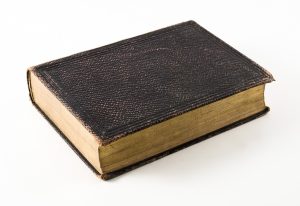The question of whether AI-generated art is suitable for book covers is one that is becoming more pertinent as artificial intelligence tools become increasingly sophisticated. As an author, publisher, or graphic designer, you may be considering the potential of using AI art for your book cover design. But how does it compare to traditional art forms? Can it capture the essence of your book? And more importantly, does it affect your book’s marketability or copyright standing? In this article, we will explore the advantages, challenges, and implications of using AI-generated art for book covers. By the end, you’ll have a clearer idea of whether AI art is a suitable choice for your next book project.
What Is AI Art?
AI-generated art refers to visual content created with the assistance of artificial intelligence algorithms. These algorithms, such as deep learning neural networks and generative adversarial networks (GANs), are capable of producing images based on a set of inputs or parameters. Using tools like DALL·E, MidJourney, or Stable Diffusion, creators can generate unique art pieces by describing concepts in words, allowing the AI to turn those words into visual representations.
You also may like to read this: Can Google Classroom Detect AI?
Can AI Art Be Used for Book Covers?
Yes, AI-generated art can be used for book covers. In fact, many authors, graphic designers, and self-publishers are already leveraging AI technology to create compelling and cost-effective cover designs. However, there are key considerations to keep in mind. Let’s explore the pros and cons of using AI art for your book cover design.
Pros of Using AI Art for Book Covers
- Cost-Efficiency Traditional book cover design can be expensive, especially when working with professional artists or graphic designers. AI-generated art can be an affordable alternative, reducing design costs.
- Speed and Efficiency AI tools can generate book cover designs within minutes, offering a fast turnaround compared to the lengthy process of working with human artists. This is ideal for self-published authors or anyone on a tight timeline.
- Endless Creative Possibilities AI art generators can create a variety of styles and compositions from simple text prompts. This flexibility allows you to experiment with different ideas and generate multiple options before selecting the final design.
- No Need for Extensive Design Knowledge You don’t need to be a graphic designer to use AI art. With intuitive tools and simple inputs, anyone can create professional-looking designs without a steep learning curve.
- Customizability Many AI platforms allow for iterative adjustments and customization, enabling you to refine the art until it aligns perfectly with your vision. You can easily tweak colors, composition, and other visual elements.
Cons of Using AI Art for Book Covers
- Lack of Originality AI-generated art often lacks the originality and nuance that a skilled human artist brings to the table. There’s a risk that your book cover may look too generic, especially if other authors use similar tools.
- Limited Control While AI art is highly customizable, it’s still not as precise as a professional designer who can interpret specific ideas and translate them into an artistic vision. The results might not always align with your expectations.
- Legal and Copyright Issues The copyright status of AI-generated art is still a grey area. Depending on the platform you use, you may not own the full rights to the image, which can lead to legal complications down the line.
- Lack of Human Touch A traditional artist can imbue a sense of emotion and personal expression into the artwork. AI lacks this human element, which may be crucial depending on the genre or tone of your book.
- Potential Overuse As AI-generated art becomes more accessible, there’s a concern that it may lead to overuse and a lack of distinction in the marketplace. A book cover needs to stand out, and AI-generated designs can sometimes look too similar to one another.
Tech Specs and Requirements for AI Art Creation
Here are some of the key tech specs and tools you can use to create AI art for book covers:
| Feature | Description |
| AI Platform | Tools like DALL·E, MidJourney, and Stable Diffusion. |
| Inputs | Text prompts, image references, and style preferences. |
| Customization Options | Color palettes, composition changes, and stylistic filters. |
| File Formats | High-resolution JPEG, PNG, and vector formats. |
| Cost | Varies by platform – some tools offer free versions, while others charge a subscription fee. |
Recommendations for Using AI Art in Book Covers
- Understand Your Genre Some genres, like science fiction or fantasy, may benefit from the creative potential of AI art. However, for genres like literary fiction or memoirs, a more personal, hand-crafted approach may be preferred by readers.
- Incorporate Human Input Even if you’re using AI to generate your cover, don’t hesitate to involve a professional designer to add final touches or to ensure that the art aligns with your branding and marketing goals.
- Test Your Design Always test your book cover design with potential readers, especially if you’re self-publishing. Feedback can help you determine if the AI art resonates with your target audience.


















